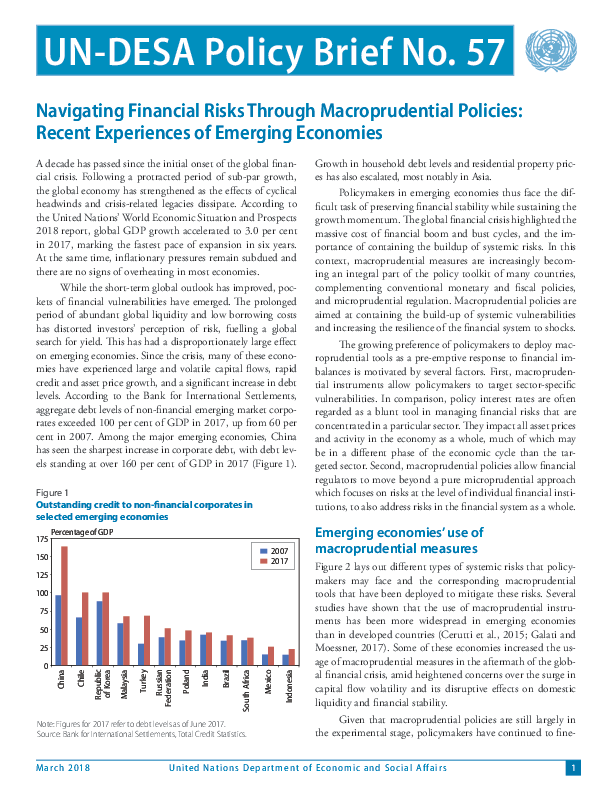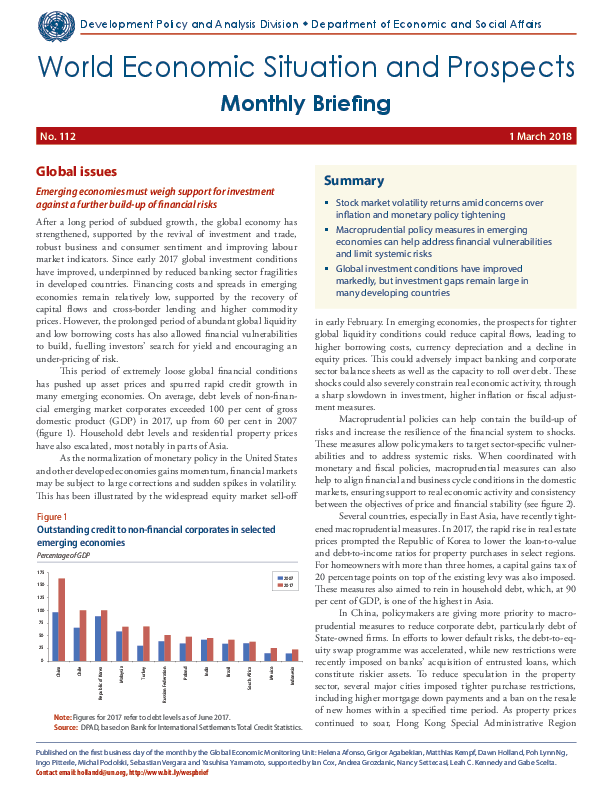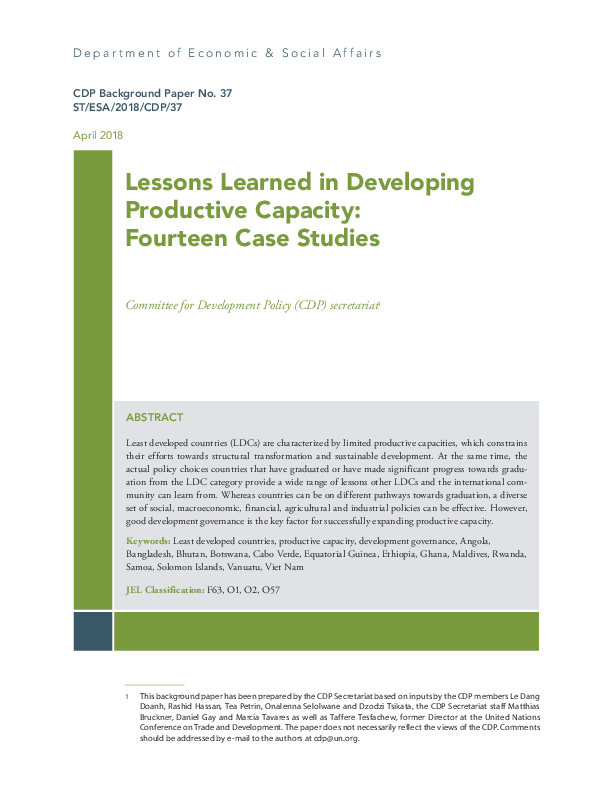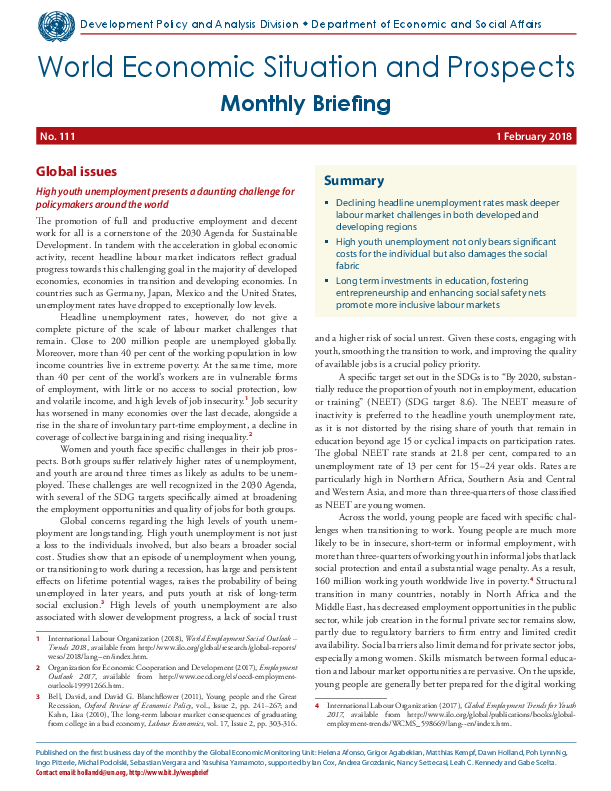Publications
Displaying 381 - 390 of 1084
Macroprudential policy measures in emerging economies can help address financial vulnerabilities and limit systemic risks
Global investment conditions have improved markedly, but investment gaps remain large in many developing countries
High youth unemployment not only bears significant costs for the individual but also damages the social fabric
Long term investments in education, fostering entrepreneurship and enhancing social safety nets promote more inclusive labour markets
 Welcome to the United Nations
Welcome to the United Nations








